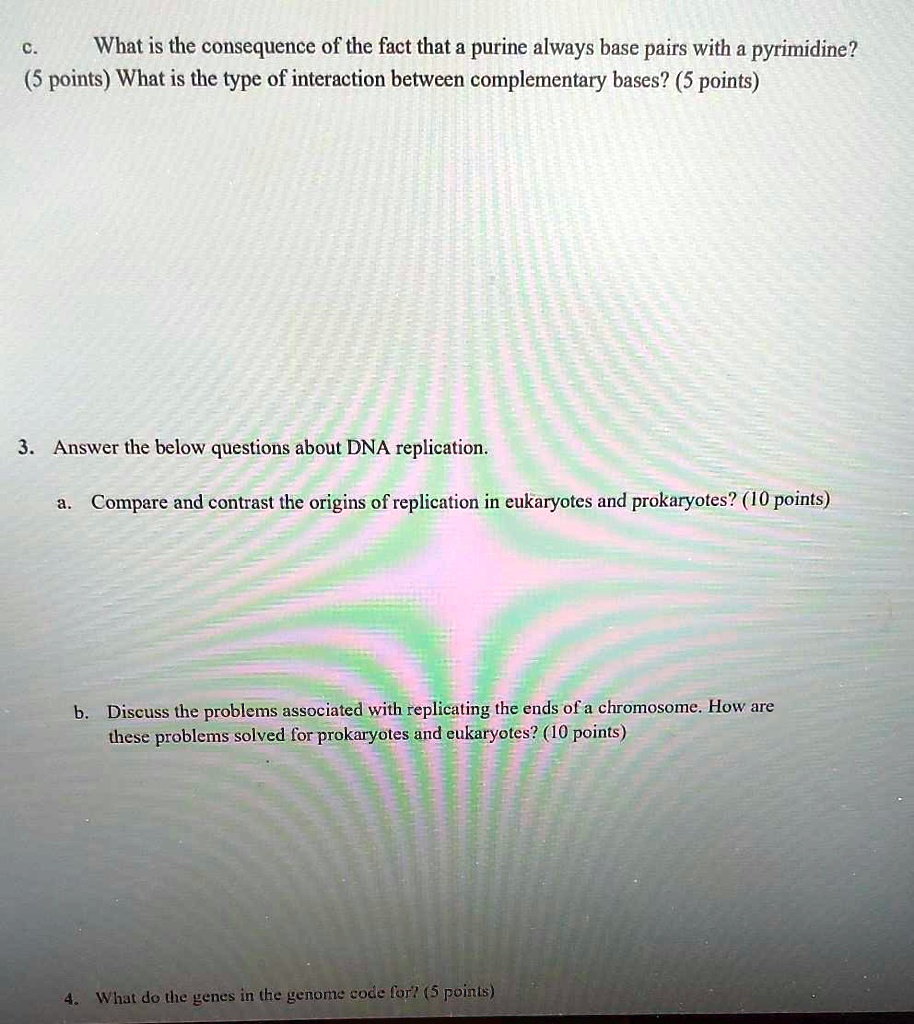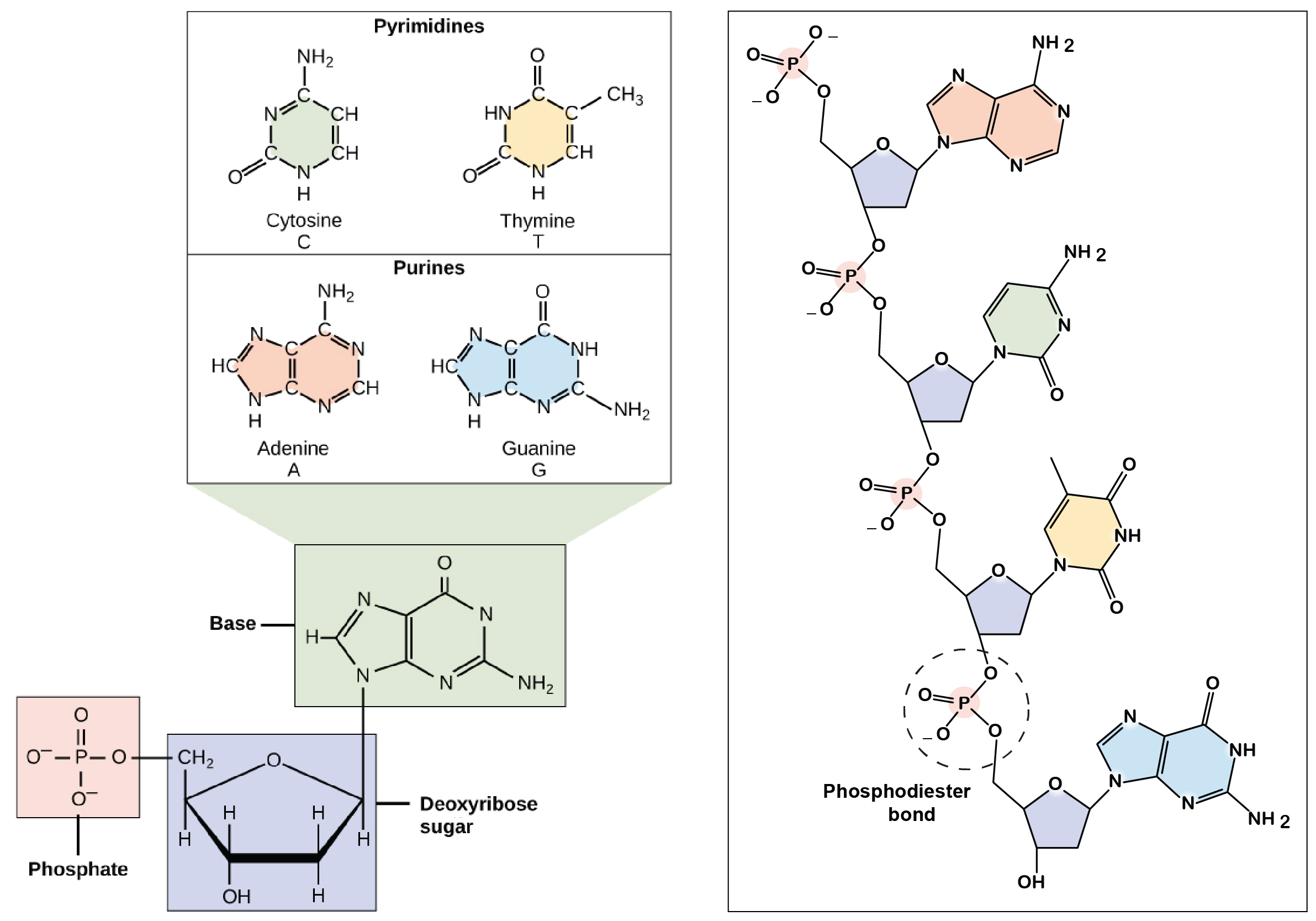
IN DNA, A PURINE MUST ALWAYS PAIR WITH A PYRIMIDINE AND VICE VERSA IN ORDER TO ENSURE THAT HOW TO
Genetic Code The instructions in a gene that tell the cell how to make a specific protein.

Once the DNA in a cell is replicated, the cell can divide into two cells, each of which has an identical copy of the original DNA. What is the purpose of DNA replication?ĭNA replication is a crucial process therefore, to ensure that mistakes, or mutations, are not introduced, the cell proofreads the newly synthesized DNA.

Complementary DNA (cDNA) is a copy of a region of a strand of DNA. A useful analog is to picture a key and a lock. (An enzyme called helicase breaks the hydrogen bonds between base pairs in DNA, causing the DNA to unzip.)Ĭomplementary deoxyribonucleic acid (DNA) is DNA in which the sequence of the constituent molecules on one strand of the double stranded structure chemically matches the sequence on the other strand. What happens in the second (of four) step of DNA replication? Nextan enzyme “unzips” the DNA strands. What happens in the second step of DNA replication?ĭNA replication starts when DNA unwinds.
 Step 7: Fix mistakes, remove RNA Primer.Įach strand of the original DNA molecule then serves as a template for the production of its counterpart, a process referred to as semiconservative replication. Step 4: Two types of strands added 3′ to 5′. Step 1: Starts at? DNA Replication begins at the Origin of Replication. What are the steps of DNA replication quizlet? In order to fit within a cell’s nucleus, DNA is packed into tightly coiled structures called chromatin, which loosens prior to replication, allowing the cell replication machinery to access the DNA strands. We know that the sample is 35% adenine, which tells us that it is also 35% thymine.There are three main steps to DNA replication: initiation, elongation, and termination. Together, these percentages will add to 100%. The percentage of adenine will equal the percentage of thymine, and the percentage of cytosine will equal the percentage of guanine. Together, that is 40 percent of the total sample. If given the information that the sample is 20 percent guanine, you can surmise it is also 20 percent cytosine since guanine and cytosine pair with each other. Since you know there are only four bases in DNA, all four bases together must equal 100 percent of the sample. People also ask, what percentage of cytosine is in DNA? Within the DNA molecule, cytosine bases located on one strand form chemical bonds with guanine bases on the opposite strand. Cytosine (C) is one of four chemical bases in DNA, the other three being adenine (A), guanine (G), and thymine (T). Chargaff's rules state that DNA from any cell of any organisms should have a 1:1 ratio (base Pair Rule) of pyrimidine and purine bases and, more specifically, that the amount of guanine should be equal to cytosine and the amount of adenine should be equal to thymine.įurthermore, how many cytosine bases does it contain? Cytosine.
Step 7: Fix mistakes, remove RNA Primer.Įach strand of the original DNA molecule then serves as a template for the production of its counterpart, a process referred to as semiconservative replication. Step 4: Two types of strands added 3′ to 5′. Step 1: Starts at? DNA Replication begins at the Origin of Replication. What are the steps of DNA replication quizlet? In order to fit within a cell’s nucleus, DNA is packed into tightly coiled structures called chromatin, which loosens prior to replication, allowing the cell replication machinery to access the DNA strands. We know that the sample is 35% adenine, which tells us that it is also 35% thymine.There are three main steps to DNA replication: initiation, elongation, and termination. Together, these percentages will add to 100%. The percentage of adenine will equal the percentage of thymine, and the percentage of cytosine will equal the percentage of guanine. Together, that is 40 percent of the total sample. If given the information that the sample is 20 percent guanine, you can surmise it is also 20 percent cytosine since guanine and cytosine pair with each other. Since you know there are only four bases in DNA, all four bases together must equal 100 percent of the sample. People also ask, what percentage of cytosine is in DNA? Within the DNA molecule, cytosine bases located on one strand form chemical bonds with guanine bases on the opposite strand. Cytosine (C) is one of four chemical bases in DNA, the other three being adenine (A), guanine (G), and thymine (T). Chargaff's rules state that DNA from any cell of any organisms should have a 1:1 ratio (base Pair Rule) of pyrimidine and purine bases and, more specifically, that the amount of guanine should be equal to cytosine and the amount of adenine should be equal to thymine.įurthermore, how many cytosine bases does it contain? Cytosine. 
Without knowing the number of thymine, the number of adenine is unknown. Note that adenine always bonds with thymine and cytosine always bonds with guanine. DNA forms a two-stranded spiral, or double helix.








 0 kommentar(er)
0 kommentar(er)
